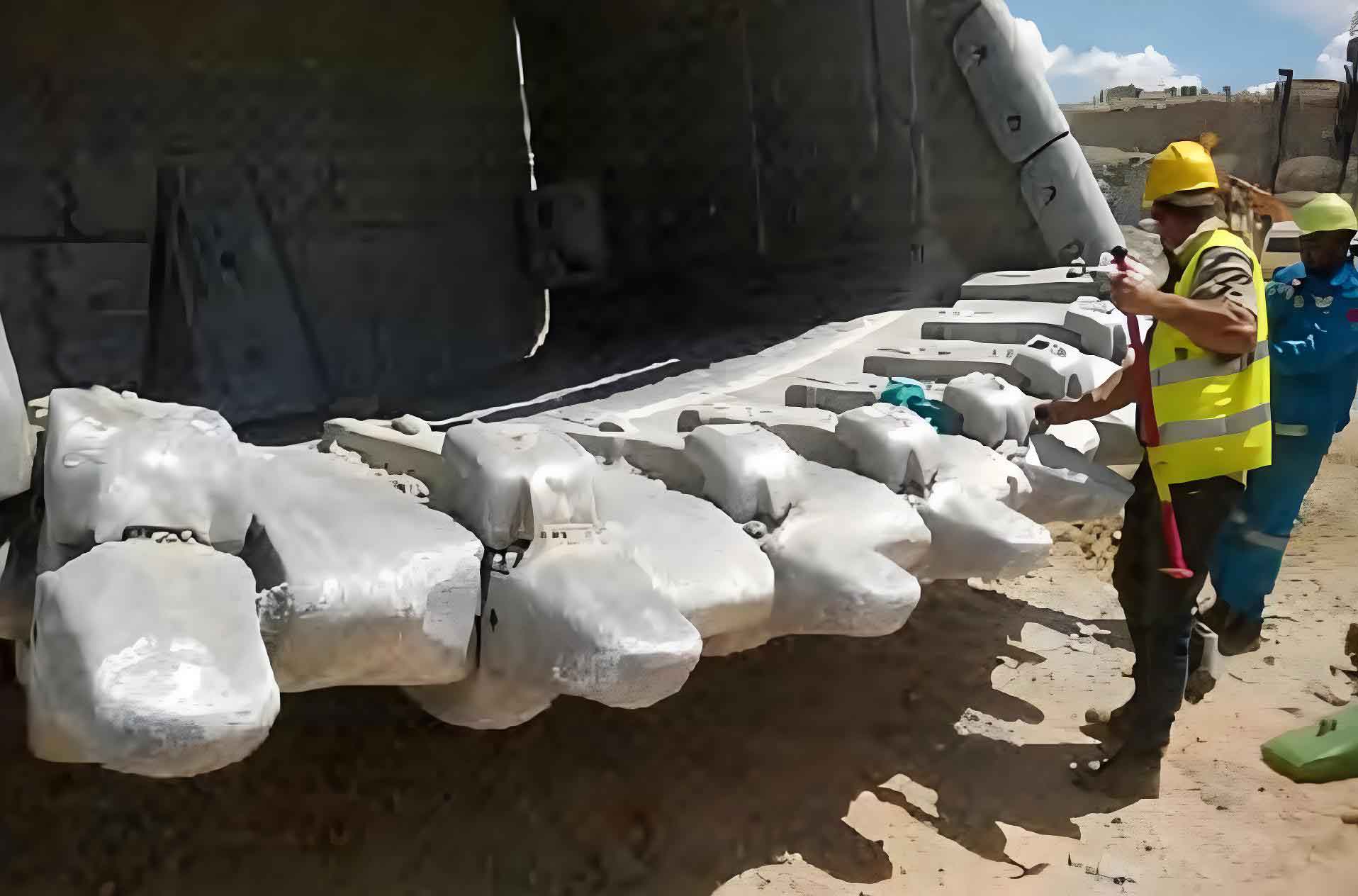The manufacturing of excavator casting parts demands precision due to their complex geometries and harsh operating conditions. The bucket front wall, a critical excavator casting part, exemplifies these challenges. With wall thickness varying between 50–150 mm and weighing approximately 1.2 tons, this high-manganese steel component experiences extreme impact, abrasion, and loading during excavation. Its uneven wall thickness and intricate design necessitate specialized foundry techniques to prevent defects like shrinkage porosity, cracks, and dimensional inaccuracies.

High-manganese steel (HMS) dominates excavator casting part production due to its exceptional work-hardening properties. The alloy composition for bucket front walls adheres to strict standards:
| Element | C | Mn | Si | S | P | V+Ti |
|---|---|---|---|---|---|---|
| Wt.% | 1.0–1.4 | 11.0–14.0 | 0.3–0.8 | ≤0.03 | ≤0.07 | 0.05–0.15 |
Key mechanical properties post-heat treatment include hardness ≥200 HB and impact toughness >100 J/cm². Linear shrinkage for this excavator casting part reaches 2.5–3.0%, calculated as:
$$ \text{Shrinkage Allowance} = L_{\text{pattern}} \times (1 + \alpha) $$
where \( \alpha \) = 0.025–0.03 for HMS, and \( L_{\text{pattern}} \) is the nominal dimension.
Casting process optimization begins with pattern design. Wood patterns incorporate shrinkage compensation and machining allowances. The molding process uses quartz-clay sand enhanced with 2% sawdust for improved collapsibility. Coatings contain magnesite powder applied at >1.5 mm thickness to prevent metal penetration. The gating system employs a stepped design with eight ingates (six lower, two upper) to ensure rapid, turbulence-free filling:
| Gating Component | Number | Cross-Section (cm²) |
|---|---|---|
| Pouring Cup | 1 | 78.5 |
| Downsprue | 1 | 50.3 |
| Ingates (Lower) | 6 | 12.6 each |
| Ingates (Upper) | 2 | 15.2 each |
Pouring temperature is maintained at 1420–1450°C to minimize hot tearing. The filling time \( t \) is governed by:
$$ t = \frac{W}{A \cdot v \cdot \rho} $$
where \( W \) = casting weight (1200 kg), \( A \) = total ingate area (110 cm²), \( v \) = flow velocity (150 cm/s), and \( \rho \) = steel density (7.8 g/cm³).
Solidification control combines internal and external chills. Internal chills are staggered in thick sections (>100 mm), while external chills spaced at 50–80 mm accelerate cooling. Chill mass \( M_c \) follows:
$$ M_c = k \cdot M_s \cdot \frac{T_p – T_s}{T_s – T_c} $$
where \( M_s \) = section mass, \( T_p \) = pouring temp, \( T_s \) = solidus temp (1400°C), \( T_c \) = chill initial temp (25°C), and \( k \) = 0.6–0.8.
Four evenly distributed necked-down risers combat shrinkage. Post-casting, water toughening (solution treatment) is critical for this excavator casting part. The thermal cycle comprises:
| Stage | Temperature (°C) | Duration (h) |
|---|---|---|
| Heating | 20→1050 | 3.5 |
| Soaking | 1050±10 | 2.0 |
| Quenching | Water ≥30 | Until <200°C |
Quenching initiates when the casting exceeds 950°C, with water temperature below 30°C. Temporary bracing prevents distortion during heat treatment. Post-processing includes vibratory stress relief and non-destructive testing (ultrasonic and magnetic particle inspection). Dimensional accuracy adheres to ISO CT12 tolerances. Implementing these protocols reduced rejection rates from 15% to under 4% for this high-stress excavator casting part.
